Our initial D-I rankings, covering the top 25 teams in Division I!
November 3, 2021 by Ultiworld in Preview, Rankings with 0 comments
 The College Power Rankings are presented by Project 1 Sports, providing great ultimate merchandise at affordable prices and empowering our community. Follow them on Twitter and Instagram!
The College Power Rankings are presented by Project 1 Sports, providing great ultimate merchandise at affordable prices and empowering our community. Follow them on Twitter and Instagram!
We are excited to present the 2021 preseason College Power Rankings! These rankings are based holistically on a number of factors: last season’s performance, roster changes, conversations with coaches and players, fall results, and assorted other factors.
Today, we reveal the teams at #11 through #25 in Division I, with the top ten coming tomorrow.
Women’s Division-I
 25. Georgia Tech Wreck
25. Georgia Tech Wreck
2020 Finish: #11 in Power Rankings, 6th in USAU Rankings, 10-1 record, 5th in 2019 Southeast
We’ve seen flashes from Wreck over the years during the regular season, but they’ve yet to achieve the postseason breakthrough that would boost their program’s status. Losing 2020 stars Chupzi Lema and Ollie Peterson will be a setback for them, thrusting Dana Rose into a major role, along with Sam Loop, Katie Dai, and Gleymi Hernandez. They have a solid group of returners from a team that was off a roaring start last season. Their 2021 season thus far has been thrashed a bit by Georgia, and a narrow win over Tennessee is disconcerting, but their vet core and recruiting trends make them a team with real potential.
 24. Virginia Hydra
24. Virginia Hydra
2020 Finish: #15 in Power Rankings, 11th in USAU Rankings, 16-2 record, 8th in 2019 Atlantic Coast
UVA’s programmatic development could offer a key advantage for them, although they have to compete with a deep region sans many of their vets. They struggled at AC Regionals in 2019, but were tearing it up in 2020, getting big wins over Vermont, Georgia, Michigan, and NC State. Blaise Sevier, the team’s 2020 Callahan nominee, along with Chandler Smith, Erin Flores, Abby Herrod, and Jane Frankel will be central returners, while they develop less experienced players like Syd Kirk and Shea Ruzich into weapons. They put together an impressive 4-0 weekend at Virginia Conferences, and they might perhaps be a team to eye for the 2022 season, but it would not be out of turn for them to progress ahead of schedule. Depth could be a real weapon against some of the region’s competitive clubs with short benches.
 23. Ohio Stacked Cats
23. Ohio Stacked Cats
2020 Finish: Unranked in Power Rankings, 27th in USAU Rankings, 12-1 record, 9th in 2019 Ohio Valley
Ohio quietly racked up a dozen wins before events were canceled in the 2020 season, perhaps setting them up to be in the bid conversation or play spoiler at Regionals. Instead, they waited until 2021, opening up the year with a shock win at Ohio Conferences, toppling powerhouse Ohio State 8-5 in the de facto final, and winning the rest of their matches by sizable margins. Caroline Gulla, a club player with Columbus Cocktails, is the handler hub for them. They’ll benefit from some returners and quality young additions, like active downfield rookies Kamryn Waites and Grace Dwyer.
 22. NC State Jaga Monsta
22. NC State Jaga Monsta
2020 Finish: Unranked in Power Rankings, 33rd in USAU Rankings, 5-6 record, 6th in 2019 Atlantic Coast
NC State underscores how strong the Atlantic Coast’s two-bid region is, with much of that in the Carolina Conference, where NC State settled for a disappointing fifth place. Ellie Cubrilovic, Jennifer Wang, Mary Clarke Worthington, and their solid core of returners can help the team transition from the loss of Rowan Jaynes. It’s very possible their experience and extra legs could get them back in front of many of their regional opponents, despite in-Conference losses to Duke, UNCW, and App State.
 21. Utah Spiral Jetty
21. Utah Spiral Jetty
2020 Finish: Unranked in Power Rankings, 35th in USAU Rankings, 6-8 record, 4th in 2019 Northwest
Utah kicked off their season by sailing smoothly through the Big Sky Conference Championships, with a 7-0 record on their ledger, a larger sample size than many other teams have put to paper.
The challenge, however, is twofold. First, Utah’s seeing a lot of turnover. The team will tackle the 2021 Series without a number of the key pieces from their previous run. The most notable returners are Kyra Khoroujnikova and Jess Olsen, who should be centerpieces for them. Fortunately, they have reinforcements in the form of U20 US National team member, Carly Atwell. The second issue is that the team has never really broken through with top-end success. But if there was ever a season to do it, 2021 would be the time.
 20. Duke Swerve
20. Duke Swerve
2020 Finish: Unranked in Power Rankings, 39th in USAU Rankings, 6-5 record, 5th in 2019 Atlantic Coast
Duke finished fourth at the strongest Conference Championship so far, narrowly losing in a 9-8 battle against UNCW, while earning wins over NC State, Clemson, East Carolina, and South Carolina. Those results dovetail well with their 2020, where they opened the season with a big upset over Georgia on their way to a solid QCTU, setting up a generally competitive season where they took a lot of close losses. Their handful of returners will likely organize around 2020 Callahan nominee Payton Schafer, a live-arm thrower with the ability to capture points quickly.
 19. UNC Wilmington Seaweed
19. UNC Wilmington Seaweed
2020 Finish: Unranked in Power Rankings, 65th in USAU Rankings, 5-13 record, 3rd in 2019 Atlantic Coast
Last season was a mixed bag for UNCW, who played a lot of strong competition in their three-tournament campaign. They struggled against elite competition and were inconsistent against mid-tier opponents, perhaps due to their small roster. But that hasn’t hampered UNCW in year’s past, and it didn’t appear to hold them back as they finished third at Carolina Conferences this season.
They again don’t have numbers, and have only six listed returners, but they are accustomed to making it work. Hannah Samuelson, who played with Charlotte Storm this season, will captain the ship for Seaweed, and instill the culture and grit that has defined the program into the new players while also handling a large percentage of key touches.
 18. Oregon Fugue
18. Oregon Fugue
2020 Finish: Unranked in Power Rankings, 60th in USAU Rankings, 6-13 record, T-9 at 2019 Nationals
Oregon began 2020 in the back of our Power Rankings and ended it out of them completely, an uninspiring 6-13 season as a program in transition. 2021 could be something of a redemption for Fugue, although their third place finish at the Cascadia Conference Championships — featuring blowout losses to Washington and Western Washington — shows they haven’t quite returned to the elite ranks. Still, Rachel Hess is a very talented returner to build around and Oregon has a pretty impressive class of incoming players from the Seattle and Oregon scenes, with Eliana Norton and Thais Thomas as two of their top potential standouts.
 17. Appalachian State Nonads
17. Appalachian State Nonads
2020 Finish: Unranked in Power Rankings, 105th in USAU Rankings, 0-5 record, 7th in 2019 Carolina Conference
Yes, you did read that correctly: Appalachian State.
App State has some of the best results we saw at any Conference Championships, where they went 4-1, beating UNCW and NC State, and putting up five goals on UNC, who allowed only eight scores in their other three games. It’s a pretty shocking turnaround for a team that failed to even advance out of their Conference in 2019, losing in the game to go to Duke, and who failed to win a game in their brief 2020 season.
The difference could be one name: Barry. Margaret Barry and her younger sister Abigail join the club and give them a new lease on life. Margaret was one of the best youth players in the country for Carolina clubs, capable of taking over games. Both Barry sisters will be accustomed to high-volume roles and difficult matchups. This is a lot for them to live up to, but hard to argue with the early results.
 16. UC Davis Rogue
16. UC Davis Rogue
2020 Finish: #24 in Power Rankings, 26th in USAU Rankings, 8-4 record, 6th in 2019 Southwest
Davis quietly put together a solid 2020, mostly getting work done at SBI, with wins over California and Wisconsin, as well as an 8-7 loss to Stanford. There are very few years where they aren’t at least a dangerous opponent come March. Thee team didn’t wait last year or this one, with an impressive showing at NorCal Conferences, where they beat Stanford 12-9 in the final to take home their local crown. While they lost a lot of experienced contributors, their most exciting 2020 additions — Allyn Suzuki and South Carolina transfer Julianna Madigan — are both cleating up for Rogue, and are likely to carry a heavy workload.
 15. Vermont Ruckus
15. Vermont Ruckus
2020 Finish: #18 in Power Rankings, 21st in USAU Rankings, 9-6 record, 5th in 2019 New England
After multiple years of earning bids for the NE and failing to hold them at Regionals, Vermont’s run of tough luck continued with the timing of their break. Their experienced core that had built the team up is gone, putting to the test their legacy as a program. So far, their 2021 looks good, yielding three wins with just two goals against at their Conference Championship.
However, Ruckus has some sturdy supports to hold up the program’s weight. Chief among them is Kennedy McCarthy, an established club star who could be the best player in the division. McCarthy is a force of nature downfield, but it’s unclear of Ruckus’s backfield talent will allow her to fulfill that type of role. Sarah VonDoepp certainly gives them a great option there, and new addition Rachel Oram-Brown, a U20 US National Team player who is one of the division’s top recruits.
 14. Chicago Supernova
14. Chicago Supernova
2020 Finish: Unranked in Power Rankings, 44th in USAU, 9-8 record, 2nd in 2019 Great Lakes
Our first breakout pick for 2021 is Chicago Supernova.1 Their buzz began to build in 2020, when they put up respectable results against Nationals-level competition at Presidents’ Day Invite. It was a good follow-up to a regional final appearance in 2019. The winter season has them in a favorable spot, returning their top veterans while adding talent like Jocelyn Sun, a U20 US National Team pick out of Boston. Cassie Brown will be in contention for the regional Player of the Year, and a number of the team’s top 2020 contributors, like Caitlyn Tien and Claire Schmitt, have also returned. Those group was able to push the team to a comfortable 4-0 at the Illinois Conference Championships.
 13. Tufts Ewo
13. Tufts Ewo
2020 Finish: #3 in Power Rankings, 3rd in USAU, 9-2 record, T-17 at 2019 Nationals
After a blazing start in 2020, Tufts looked primed to be the top challenger to the preordained duo of Carleton and North Carolina. Their deep club, featuring 2020 D-I Player of the Year Margo Urheim, benefited from strong recruiting, giving them a window where they had both a strong squad and bright future.
That sizable veteran presence, however, is gone, so the keys have been handed to their new class. The on-field valedictorian is Hazel Ostrowski, the reigning Rookie of the Year, who was good enough in 2020 to earn votes for an All-American spot. But Olivia Goss was very effective in her debut campaign, as well, and Leija Helling just spent a season honing her craft with Brute Squad. How this typically balanced squad develops their role players and utilizes their talented core will be one of the stories of the season.
12. Georgia Athena
2020 Finish: Unranked in Power Rankings, 24th in USAU, 8-10 record, T-9 at 2019 Nationals
Georgia’s roster looked prime for a bright 2020, and they debuted at #11 in preseason Power Rankings. But they disappointed in all three of their regular season showings and fell out of the top 25, casting doubt on their ability to assert themselves as the frontrunner in the Southeast.
In 2021, however, their early returns are more promising. They faced little resistance at either the Southern Appalachian Conference Championships, where they won all of their games by six or more goals, or at Virginia Fusion, where they shot into the final to get dismissed by powerhouse UNC, 13-4. Marie Perivier headlines once more, but Martha Wilber and Katherine Suarez flank her on this fall’s roster. How the team fills in the lost throwing skill, concentrated in Josie Veal, will be critical to them living up to their winter potential.
11. Texas Melee
2020 Finish: #20 in Power Rankings, 25th in USAU Rankings, 7-8 record, T-13 at 2019 Nationals,
A messy start to the 2020 season as Presidents’ Day and Stanford Invite left Texas without many exciting results, but showed a team with clear potential to dial it in. Aside from dynamo Ivy Harrison, nearly every key contributor from Melee is back for the 2020 Series. That means opponents can expect their regular dose of Caroline O’Connell, with hyped 2020 transfer Mindy Radike also ready to show the impact they can have for this historic program. There’s good depth for them to turn to.
 10. Colorado Quandary
10. Colorado Quandary
2020 Finish: #16 in Power Rankings, 20th in USAU Rankings, 9-7 record, T-9 at 2019 Nationals
Quandary will once again be expected to battle for the South Central title with a team full of talent. They opened by winning the Rocky Mountain Conference Championship, going 4-0 with only their opening game playing close. And given how many new faces are in key roles, it’s understandable. They again have a fantastic set of new players, with Clil Phillips making her long-awaited Series debut, along with youth talents like Sierra Petrash and Liana Bradley. Grad Akane Kleinkopf brings handling skill from Whitman that Colorado could really benefit from. Unfortunately, they’ll be without Skye Fernandez and Bailey Shigley due to injury. Along with a strong core of returners around Emma Capra, Colorado has the potential to develop into a semifinal contender this year.
 9. Pittsburgh Danger
9. Pittsburgh Danger
2020 Finish: #12 in Power Rankings, 13th in USAU Rankings, 10-8 record, T-17 at 2019 Nationals
As will be a theme in the top 10, a significant portion of the major contributors for Pittsburgh are set to don Danger kits again in 2021. You’re probably familiar with Jessie Sun, a runner-up for 2020 D-I Defensive Player of the Year, capable of some incredible individual feats. But Pittsburgh Parcha’s Celeste Picone and Linn Bjanes can drive a top-end offense, and Madison Pisone and Beth Manturuk provide two-way firepower. Pitt will have a chance to add flexibility integrating 2020 recruit Jessie Chan, former Yale handler Yara El-Khatib, and potential breakout Sophia Kosowsky. A healthy Miranda Kosowsky could vault them even higher. They are in a comfortable position atop a three-bid Ohio Valley.
 8. Stanford Superfly
8. Stanford Superfly
2020 Finish: #4 in Power Rankings, 9th in USAU Rankings, 15-6 record, 5th in 2019 Southwest
Stanford was one of the big stories of the 2020 regular season after impressive runs at both Presidents’ Day and Stanford Invite. Hallie Dunham played herself to the top of the 2020 D-I Offensive Player of the Year race, but Maika Isogawa, Bridget Connor, and Sarah Kratzer all made notable impacts helping put Stanford into the national semifinalist conversation. That entire core group is back this winter, and they are joined by Yale transfer Amelia Farinas and impressive DC-area recruit Anna Fisher-Lopez. Their 12-9 loss to UC Davis in the final of the NorCal Conference Championships came missing some of those stars, including Dunham.
 7. Western Washington Chaos
7. Western Washington Chaos
2020 Finish: #9 in Power Rankings, 16th in USAU Rankings, 6-3 record, T-5 at 2019 Nationals
A three-day weekend in February was all that we got to see of Western Washington in 2020. This year’s club doesn’t look that different, save the addition of Ally Constantino, a top-flight Seattle thrower who spent her rookie season at Puget Sound. She’ll step into a backfield with slinging Samiya Ismail, just one of a deep group of returners with big-stage Nationals experience. They came within inches of a national semifinal berth last time they were in the series; there’s enough carryover to keep that hunger.
 6. UCLA BLU
6. UCLA BLU
2020 Finish: #7 in Power Rankings, 14th in USAU Rankings, 16-8 record, T-13 at 2019 Nationals
A third place finish at SoCal Conferences may seem low for a top six team, but UCLA lost to two teams ranked above them by a combined four goals. Athena Lynch and Erin Doyle pace play for BLU, who has a strong group of returners — 2020 BPOTY runner-up Stephanie Yen is particularly exciting — that should keep this club from missing a beat. While they lost Charlotte Terrasson, they add US U20 National Teamer Chuc Luu and Stanford convert Marie Payne. While there’s no such thing as a comfortable position in the Southwest, having three bids with a team this good is not a bad place to be.
 5. UC San Diego Dragon Coalition
5. UC San Diego Dragon Coalition
2020 Finish: #5 in Power Rankings, 4th in USAU Rankings, 17-5 record, 2019 National Champions
It’s good to be queen. All UCSD has done since they captured the USAU crown was win 22 of their next 28 games, including finishing second at SoCal Conferences to UCSB in a 12-8 loss. Madison Tenney, Pin-Hsuan Chen, and the Hanna twins return, joined by Maggie Pierce and Abby Shilts, giving them high quality recruits from three straight classes to tap into. It was easy to be skeptical that they could remain elite without Dena Elimelech, Kelli Iwamoto, and company, but there has been too much success since to begin from a position of doubt.
 4. UC Santa Barbara Burning Skirts
4. UC Santa Barbara Burning Skirts
2020 Finish: #8 in Power Rankings, 12th in USAU Rankings, 16-7 record, T-5 at 2019 Nationals
In reality, we might be able to order this Southwest trio in a variety of ways, but SoCal Conferences lines them up as such. With All-American Kaitlyn Weaver and 2020 D-I Breakout Player of the Year Elsa Winslow both back, UCSB will have the top end talent to compete. But without Jasmine Childress and Nikki Yang, they’ll need some new names to make themselves known. Fortunately, the Skirts add Devin Quinn, Julia Hasbrook, and Maria Sutherland, all of whom should be able to be plusses from day one.
 3. Washington Element
3. Washington Element
2020 Finish: #6 in Power Rankings, 5th in USAU Rankings, 10-3 record, T-13 at 2019 Nationals
The impressive recruiting and development of Washington seemed to finally have them back in the division’s elite tier prior to the pandemic. But that simply delayed their ascension, as they continued to bring in talent. As if Abby Hecko and Amy Nguyen weren’t enough in 2020, they add Seattle Mixtape’s Sophia Palmer and Seattle Riot’s Maddy Grassy in 2021. Steph Phillips was fantastic during the 2020 season, and Penny Nguyen was awesome for Riot this season, as well. Even Grace Young and Alexa Yadama are back. This type of talent and depth combination is what title contenders are made of.
 2. North Carolina Pleiades
2. North Carolina Pleiades
2020 Finish: #2 in Power Rankings, 2nd in USAU Rankings, 12-1 record, T-3 at 2019 Nationals
It’s strange for UNC to lose a player as impactful as Anne Worth, out with a ligament injury, and potentially still not have their ranking affected. Carleton was a hair better in 2020, but UNC’s coffers are still well-supplied. You know the names from Raleigh Phoenix and Raleigh Radiance — Smith, Mizener, Juengst, Culton, Barnett — and Sydney Rehder, Connie Cui, Florence Brooks, and Julia Zwierzynski are also back. They add Grace Conerly, who played with both the Raleigh senior and semi-pro teams and who joins Theresa Yu as the stars-to-be, and Erica Birdsong. Can a team missing its best player — the best player in college ultimate — still win a title?
 1. Carleton Syzygy
1. Carleton Syzygy
2020 Finish: #1 in Power Rankings, 1st in USAU Rankings, 12-0 record, T-5 at 2019 Nationals
Scary as it may be, Carleton is probably going to emerge from the pandemic even more talented than they entered it. That’s despite losing Isabel Arevalo and Emma Gautier. That’s because their list of returners is intimidating, with defending D-I Defensive Player of the Year Nariah Sims, fellow All-American Carly Campana, and a number of elite college players and club experience across their roster. But on top of that, they added Victoria Gray and Aria Kischner, making for another tremendous class of recruits to follow Emma Chin’s group in 2020. They gave up only four goals at their Conference Championships, and may not give up many more at Regionals, either.
Men’s Division-I
 25. Wisconsin Hodags
25. Wisconsin Hodags
2020 Finish: #24 in Power Rankings, 29th in USAU Rankings, 8-8 record, T-5 at 2019 Nationals
Wisconsin is going to have to scrap for a place at Nationals this fall, with only two bids in the North Central and two higher-ranked teams, Carleton and Minnesota, standing in their way. Veterans Ted Schewe, Jacob Rubin-Miller, and Matthew Grinde will be imperative to that quest. The Hodags are no strangers to playing underdog against in-region foes that look more talented on paper. Nico Ranabhat, Saul Diaz, and Patrick LaVallee could be big impact players in Madison this season as the top end of their recent recruiting classes. Their dominance at Lake Superior Conferences doesn’t tell us much except, but they’ve certainly checked off the “beat the teams in front of you” box thus far.

24. Utah Zion Curtain
2020 Finish: Unranked in Power Rankings, 42ndh in USAU Rankings, 9-14 record, 4th in 2019 Northwest
With a distinct lack of Oregon in the region, Utah has to be licking their lips about the Northwest’s second Nationals bid. Their Conference Championships performance was underwhelming, albeit without a loss. They’ve got a deep roster, plenty of chemistry together playing for local club Powder Hogs, and a young star in junior Patrick Beckett of Portland Rhino. Trey Taylor is sure to play a big role and Kurt Bruns should be a quality addition. They should be happy about their chances heading into Regionals.
 23. Virginia Tech Burn
23. Virginia Tech Burn
2020 Finish: Unranked in Power Rankings, 15th in USAU Rankings, 8-8 record, 5th in 2019 Atlantic Coast
Virginia Tech, while deep, talented, and headlined by Adam Norrbom, has the misfortune of playing in the deepest region in the country. They’re clearly a tier below the top teams in the region, they’re more than capable of upsetting any regional foe not called Darkside. Paired with Norrbom is Collum Bergeron, but Burn also has built up some solid recruits, like Jacob Slade and Curtis Kim, to fill out their depth and offer potential upside if one of those younger players breaks out. They had enough firepower to win their Virginia Conference Championships.
 22. UCLA Smaug
22. UCLA Smaug
2020 Finish: #21 in Power Rankings, 16th in USAU Rankings, 13-10 record, 5th in 2019 Southwest
It’s hard not to talk about UCLA’s 2021 fortunes without starting with burgeoning star, Riley Kirkman-Davis. The surprise 2020 D-I Rookie of the Year beat out bigger names with a great year and continued that run after the break in ultimate subsided with an impressive first season with Revolver. But UCLA features his even younger Revolver teammate, Marshall Wildman, along with some solid players around them, making them a Southwest threat.
 21. UC Santa Barbara Black Tide
21. UC Santa Barbara Black Tide
2020 Finish: Unranked in Power Rankings, 26th in USAU Rankings, 9-14 record, 7th in 2019 Southwest
With plenty of experience playing together on local club team Sundowners, Black Tide should be competitive in the always-volatile Southeast. NC State veteran Rhys Gretsch promises have an immediate impact in Black Tide’s quest for a Nationals berth, joining Kyle Johnson and the team’s other quality veterans. Their 2021 campaign got off to a solid start by beating UCLA 12-9 on their way to a third place finish at SoCal Conferences.
20. Colorado State Hibida
2020 Finish: #16 in Power Rankings, 14th in USAU Rankings, 10-5 record, 5th in 2019 South Central
Veterans Mo Scott, Will McDonald, and Dylan Latham McGraw return to Hibida this fall, hoping to pounce on a potential Nationals bid. State will need a massive showing from its deep rookie class in order to sneak past either Colorado or Texas, as a 13-5 loss to Mamabird at Conferences demonstrates. That class could have some potential gems in it: Nick Phillips, who has some notable top end play with Flash Flood and the Indy AlleyCats, and Wes Poole should add a lot after their short 2020 pilot seasons. They looked good during that period and could pick up from there.
 19. Massachusetts ZooDisc
19. Massachusetts ZooDisc
2020 Finish: #7 in Power Rankings, 8th in USAU Rankings, 12-4 record, 4th in 2019 New England
Out with the Tannor Johnson, in with the Orion Cable. Far and away the most hyped and experienced first year in the country, Cable is the kind of centerpiece coaches dream about. The supremely skilled big man is flanked by Amherst Sprout veterans Gabe Franklin, Noel Sierra, and Reuben Philip. And Cable isn’t the only notable recruit, with fellow U20 US National Team selection Jae Lee also ready to help out right away. This team is, obviously quite young, so expect plenty of highs (defeating Brown at Conferences) and lows (losing to McGill).
 18. Stanford Bloodthirsty
18. Stanford Bloodthirsty
2020 Finish: Unranked in Power Rankings, 41st in USAU Rankings, 8-15 record, 4th in 2019 Southwest
Stars Nick Hirning and Kevin Tien return for the fall and give Bloodthirsty a good chance at a Nationals appearance. Junior Simon Covington, a key defensive presence for Philadelphia AMP, will be essential in that effort and should be on the Breakout Player of the Year watchlist. Their Conferences squad was able to grit out close wins in their undefeated run.
 17. UT Dallas Woof
17. UT Dallas Woof
2020 Finish: #23 in Power Rankings, 30th in USAU Rankings, 8-8 record, 4th in 2019 South Central
Pre-pandemic, UT Dallas was a program on the rise. Post-pandemic, that still seems to be the case. Jason Dick and Jason Hustad are as dangerous a duo as any in the country, but its just a shame that the South Central has two other absolutely stacked teams, and only two bids. They ransacked the North Texas Conference Championships, only giving up more than three goals once (eight to Baylor, who they beat 13-1 in the final) on their way to first place.
 16. Northeastern Huskies
16. Northeastern Huskies
2020 Finish: Unranked in Power Rankings, 37th in USAU Rankings, 6-10 record, T-13 at 2019 Nationals
With one of the premier roster additions in the division, in the form of former William & Mary star Gus Norrbom, Northeastern now has two of the best players in the region. Should Norrbom and program stalwart Ben Field develop some chemistry together, there will be few teams excited to play Northeastern. A first place finish at Metro Boston CCs, capped off by a 12-9 victory against Tufts in the final, is a pleasant start and a good jumping off point for a solid rookie class, who joins a core that competed together with a surprisingly competent Iditarod squad this past club season.
 15. UNC Wilmington Seamen
15. UNC Wilmington Seamen
2020 Finish: #14 in Power Rankings, 20th in USAU, 11-6 record, 5th in 2019 Atlantic Coast
Like a few other teams in preseason Power Rankings, 90% of the Seamen’s roster played for the same club team: Right Coast. Their most important player, meanwhile, won a club national championship with Raleigh Ring of Fire. Connor Russell can do it all, and will have to should Wilmington want to qualify for Nationals, let alone compete for a championship of their own. With 2020 D-I Breakout Player of the Year Ethan Ylizarde headlining an experienced and capable roster behind Russell, the Seamen look ready for conquer the stormy waters of Atlantic Coast Regionals.
 14. Maryland Space Bastards
14. Maryland Space Bastards
2020 Finish: Unranked in Power Rankings, 114th in USAU, 3-8 record, 3rd in 2019 Atlantic Coast
The vast majority of Maryland’s fall roster spent the summer playing together on College Park Town Hall Stars, qualifying for Mid-Atlantic Regionals and developing vital chemistry. The few players that didn’t play for THS only did so because they were busy being vital pieces of DC Truck Stop and Virginia Vault. Given the strength of UNC, Maryland is likely to have to duke it out with NC State and UNC Wilmington for the final two out of three bids in the region, despite all three teams looking like deserving qualifiers. While Jeremy Hess and Colin McLaughlin figure to spearhead the College Park crew, they may prove to be one of the deeper teams in the region, too.
 13. Minnesota Grey Duck
13. Minnesota Grey Duck
2020 Finish: #13 in Power Rankings, 11th in USAU, 10-6 record, T-13 at 2019 Nationals
Grey Duck is a bit of a question mark. Their most important 2020 seniors – Wystan Duhn, Cole Jurek, and Trevor Graham – are gone. This team will look entirely different, but that’s not necessarily a bad thing, as evident by their 13-11 upset of Carleton at Northwoods Conferences. Extremely young but stacked with talent, Minnesota is a team on the rise, with a lot of players who spent the past few months cutting their teeth on the club circuit, whether it be with Sub Zero, Mallard, or the sequel, Mallard II.
 12. Ohio State Leadbelly
12. Ohio State Leadbelly
2020 Finish: #10 in Power Rankings, 7th in USAU, 8-3 record, T-5 at 2019 Nationals
After coasting through Ohio Conferences and emerging with nary a scratch on them, Ohio State once again looks like it is a favorable position to claim a Nationals bid out of the Ohio Valley, pairing with Pittsburgh at the top. The Agamis are known commodities at this point, handling dynamos that are able to run the show on both offense and defense. Also returning is 2019 Callahan nominee Zach Braun, plus a number of other sixth-year veterans. They add a solid recruiting class that should only add to a lengthy list of potential contributors.
 11. Michigan MagnUM
11. Michigan MagnUM
2020 Finish: #9 in Power Rankings, 17th in USAU, 17-1 record, T-5 at 2019 Nationals
If they play to their potential, Michigan will stroll to a Great Lakes regional title and Nationals berth. How they perform after that, however, is anyone’s guess. This is a very deep team, one of the deepest in the country. While their stars are relatively unknown, Adam Stautberg and James Hill are fresh off a national club final appearance with Hybrid. They’ll try to steer Magnum to similar success this fall with the help of Jared Schwallie and Raymond Lu, who could blossom into an All-American candidate. Their solid recruits of past years are ready to take on bigger roles, and they add Aaron Bartlett and James Baker to that list, ensuring Michigan could be consistent Nationals presence for the foreseeable future.
 10. Georgia Jojah
10. Georgia Jojah
2020 Finish: #15 in Power Rankings, 22nd in USAU, 7-5 record, T-9 at 2019 Nationals
Jojah is led by an extremely strong junior class. The trio of Hayden Austin-Knab, Aidan Downey, and Adam Miller make Georgia unquestionably the best team in the Southeast. But it’s their veterans — like Matthew Cook, Coleman Tappero, and Drew Di Francesco — that will decide if they can compete for a title. If their depth is up to the task, replacing some of their key losses, they can do a lot more than just win the Southern Appalachian Conference Championship comfortably.
 9. Cal Poly SLOCORE
9. Cal Poly SLOCORE
2020 Finish: #5 in Power Rankings, 3rd in USAU, 18-5 record, T-3 at 2019 Nationals
While perhaps not as deep as previous seasons, Cal Poly is as dangerous as ever. Veterans Jeremy Dolezal-Ng and Conor Schofield return for one final shot, filling out an otherwise youthful roster. But make no mistake: SLOCORE’s title hopes will live or die by the hands of their “Big 3”: All-American and DPOTY runner-up KJ Koo, Jake Thorne, and Calvin Brown. Uber-talented and brimming with experience off successful club seasons, together they form a three-headed monster that would make Cerberus shudder. They had a couple of Conference scares in 12-10 wins over Santa Barbara, but the ceiling is another semifinal appearance.
 8. NC State Alpha
8. NC State Alpha
2020 Finish: #22 in Power Rankings, 21st in USAU, 11-6 record, T-17 at 2019 Nationals
Club national champion Trevor Lynch leads an Alpha squad that returns almost every important piece from 2019. The Carolinas are swathed with young talent these days, so expect NC State to boast plenty of depth in addition to its headliner. They have a multitude of contributors who can catch fire in a big game. Sean Wiles and Suhas Madiraju bring additional of upside to their roster. They’re the most likely team in the region, aside from Darkside, to nab a Nationals bid. A one goal loss against UNC at Carolina Conferences is promising for Alpha.
 7. Texas TUFF
7. Texas TUFF
2020 Finish: #25 in Power Rankings, 31stt in USAU, 9-7 record, T-5 at 2019 Nationals
Texas returns every impact player from their fantastic 2019 campaign, while adding UMass central handler Jake Radack. He’ll join the Chambers brothers, Matt Armour, Jake Sames, Vinay Valsaraj, and Shane Heath as core members of the program. John Clyde and Zach Slayton could be primed for emergent campaigns. We should see plenty of exciting plays with a roster stuffed with athletes; if injuries aren’t an issue,2 Texas is capable of beating anyone.
 6. Pittsburgh En Sabah Nur
6. Pittsburgh En Sabah Nur
2020 Finish: #8 in Power Rankings, 9th in USAU, 11-5 record, T-5 at 2019 Nationals
You know, we’ve been having a lot of trouble coming up with a reason why Pitt should compete for a national championship. We’re not seeing anyone who can be the go-to-guy, the superstar, the guy making the big plays with the game on the line. Oh wait, there’s two of them. The Callahan winner, Michael Ing, and his brother, Henry, are both primed for big years. But, per usual, there’s a wealth of seasoned players that will benefit from multiple seasons of chemistry and system building, with Leo Warren and Will Hoffenkamp recognizable as particularly high-value players.
 5. Brown Brownian Motion
5. Brown Brownian Motion
2020 Finish: #12 in Power Rankings, 13th in USAU, 11-5 record, 2019 National Champions
Do we need to say it? John Randolph! Perhaps the best player in the men’s college division right now, Randolph played a pivotal role on New York PoNY’s offense and was instrumental in their stupendous Nationals performance. Meanwhile, Jacques Nissen has demonstrated two-way talent in both club and AUDL play. He and Boston Dig’s Sol Rueschemeyer-Bailey should be central in the communal effort to replace Mac Hecht. But don’t mistake this for a top-heavy team, as a lot of the role players who’ve made them an elite team and champion are also back for another go ’round.
 4. Washington Sundodgers
4. Washington Sundodgers
2020 Finish: #6 in Power Rankings, 2nd in USAU, 20-2 record, T-9 at 2019 Nationals
Aside from the obvious big names — Manny Eckert is an OPOTY candidate if 2020 runner-up teammate Lucas Chen doesn’t take it, and Tony Venneri was a defensive marvel for Sockeye — look for deep threat Jakob Steen and zippy handler Gabe Port to excel. Incoming first year Assaf Golan should also be able to have an immediate impact, with two years of Sockeye experience under his belt. And we didn’t get a full season of Southern California transfer Sam Cook as a Sundodger yet, but he could be an All-American in his own right.
 3. Carleton CUT
3. Carleton CUT
2020 Finish: #10 in Power Rankings, 17th in USAU, 11-5 record, 4th in 2019 North Central
Carleton’s 42 player roster is headlined by multiple elite club players, including club national champions Dillon Lanier and Ethan Bloodworth. Missing, however, is one Joe White. Luckily, CUT has a bit of experience with the oft-injured White being unavailable and might enjoy a new, more evenly distributed offensive workload. Backfield rock Andrew Roy can guide the offense with the help of similarly reliable cutter Stan Birdsong. And they’ve got plenty of very solid recent recruits, like Mauricio Badillo Moorman and Jace Dean, to strengthen their ranks. Their talent is almost enough to handwave away a Conference Championships loss to Minnesota, but their history of postseason foibles pins that note to their story.
 2. Colorado Mamabird
2. Colorado Mamabird
2020 Finish: #3 in Power Rankings, 5th in USAU, 12-3 record, T-3 at 2019 Nationals
Mamabird basically went to the Club Nationals as Lotus, and didn’t look out of place against some of the best men’s teams in the world. Against the less-talented college division, that experience will be highly valuable, and maybe even moreso against other powerhouse contenders. Alex Atkins, Quinn Finer, and Matthieu Agee are back to spearhead to Boulder attack, but we’re all eagerly awaiting Daniel Landesman, Calvin Stoughton, and Cole Besser’s continued growth. Stoughton sometimes even outplayed the much-hyped Landesman, but the latter looked the part of a star collegian in his club performance.
 1. North Carolina Darkside
1. North Carolina Darkside
2020 Finish: #1 in Power Rankings, 1st in USAU, 18-0 record, 2019 Runner-up at 2019 Nationals
With multiple recent club champions returning, it shouldn’t come as a surprise that UNC sits atop the preseason rankings. While touches might be dominated by stars Anders Juengst, Liam Searles-Bohs, and Elijah Long, current players like Alex Davis, Ben Dameron, Matthew McKnight, Andrew Li, and first year Josh Singleton should see big roles as well, as Darkside simultaneously preps for the spring season. Jayden Feagans and Kevin Pignone have been overshadowed in their brief careers but could have bigger opportunities in UNC’s attempt to return to the top of the mountain.
 25.
25.  24.
24.  23. Ohio Stacked Cats
23. Ohio Stacked Cats 22.
22.  21.
21. 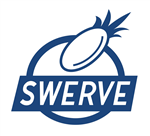 20.
20.  19.
19.  18.
18.  17. Appalachian State Nonads
17. Appalachian State Nonads 16.
16.  15.
15. 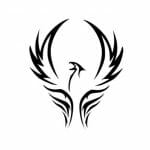 14. Chicago Supernova
14. Chicago Supernova 13.
13. 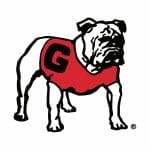

 10.
10. 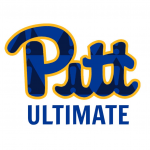 9.
9. 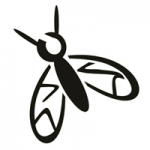 8.
8. 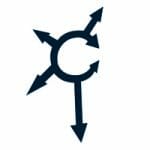 7.
7.  6.
6.  5.
5.  4.
4.  3.
3.  2.
2.  1.
1. 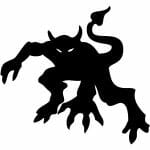 25.
25.  23.
23. 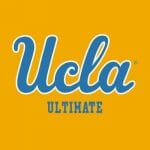 22.
22.  21.
21. 
 19.
19.  18.
18.  17.
17.  16.
16.  15.
15. 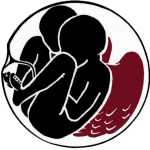 14.
14.  13.
13.  12.
12.  11.
11. 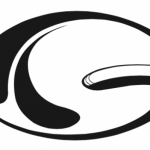 10.
10.  9.
9.  8.
8. 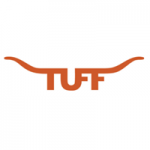 7.
7. 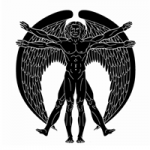 6.
6.  5.
5.  4.
4.  3.
3.  2.
2.  1.
1.